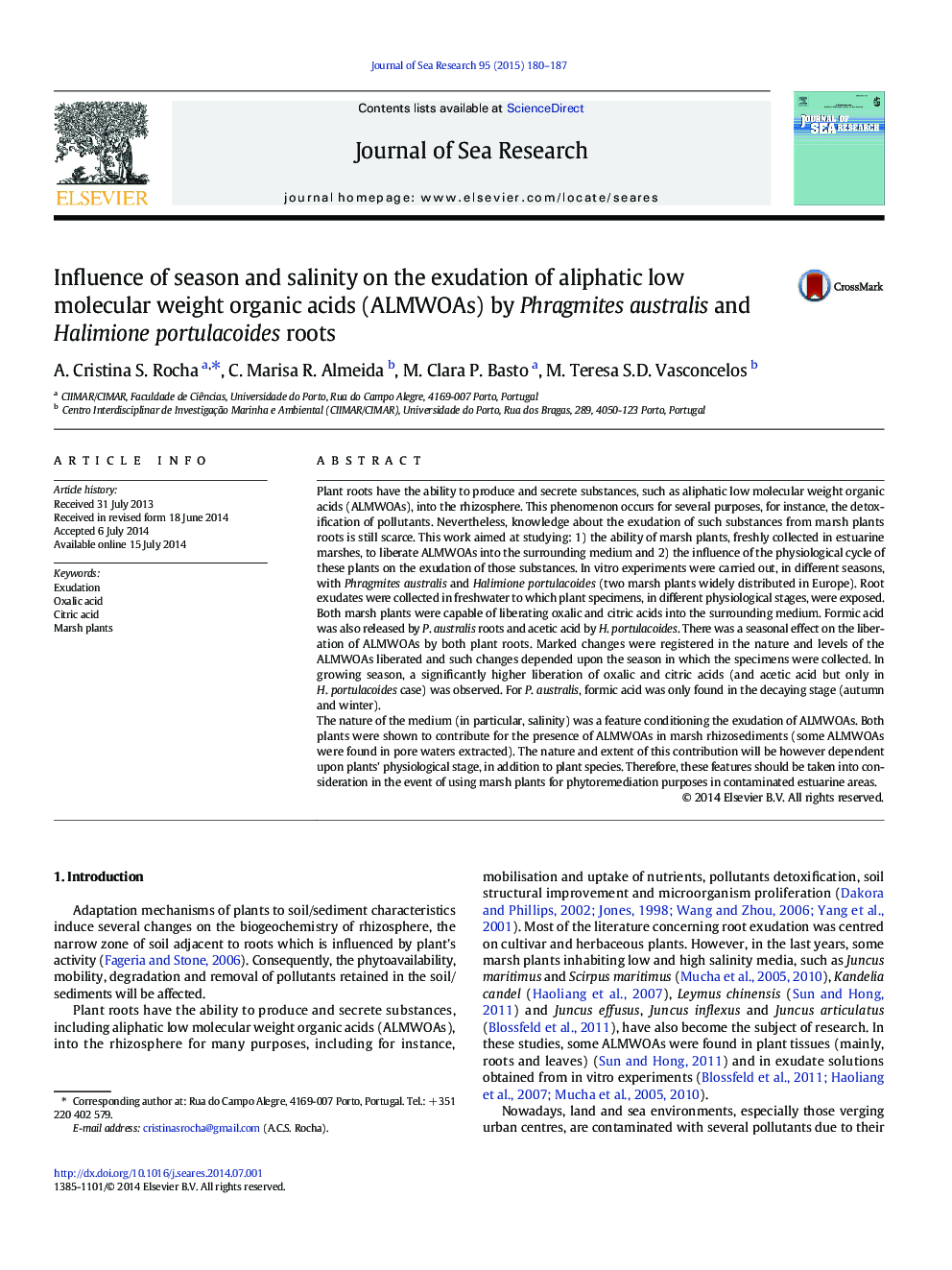| Article ID | Journal | Published Year | Pages | File Type |
|---|---|---|---|---|
| 4549759 | Journal of Sea Research | 2015 | 8 Pages |
•P. australis and H. portulacoides exuded, in vitro conditions, oxalic and citric acids.•The nature and levels of the ALMWOAs liberated varied markely amongst seasons.•Both plants may contribute for the presence of ALMWOAs in marsh rhizosediments.
Plant roots have the ability to produce and secrete substances, such as aliphatic low molecular weight organic acids (ALMWOAs), into the rhizosphere. This phenomenon occurs for several purposes, for instance, the detoxification of pollutants. Nevertheless, knowledge about the exudation of such substances from marsh plants roots is still scarce. This work aimed at studying: 1) the ability of marsh plants, freshly collected in estuarine marshes, to liberate ALMWOAs into the surrounding medium and 2) the influence of the physiological cycle of these plants on the exudation of those substances. In vitro experiments were carried out, in different seasons, with Phragmites australis and Halimione portulacoides (two marsh plants widely distributed in Europe). Root exudates were collected in freshwater to which plant specimens, in different physiological stages, were exposed.Both marsh plants were capable of liberating oxalic and citric acids into the surrounding medium. Formic acid was also released by P. australis roots and acetic acid by H. portulacoides. There was a seasonal effect on the liberation of ALMWOAs by both plant roots. Marked changes were registered in the nature and levels of the ALMWOAs liberated and such changes depended upon the season in which the specimens were collected. In growing season, a significantly higher liberation of oxalic and citric acids (and acetic acid but only in H. portulacoides case) was observed. For P. australis, formic acid was only found in the decaying stage (autumn and winter).The nature of the medium (in particular, salinity) was a feature conditioning the exudation of ALMWOAs. Both plants were shown to contribute for the presence of ALMWOAs in marsh rhizosediments (some ALMWOAs were found in pore waters extracted). The nature and extent of this contribution will be however dependent upon plants' physiological stage, in addition to plant species. Therefore, these features should be taken into consideration in the event of using marsh plants for phytoremediation purposes in contaminated estuarine areas.
